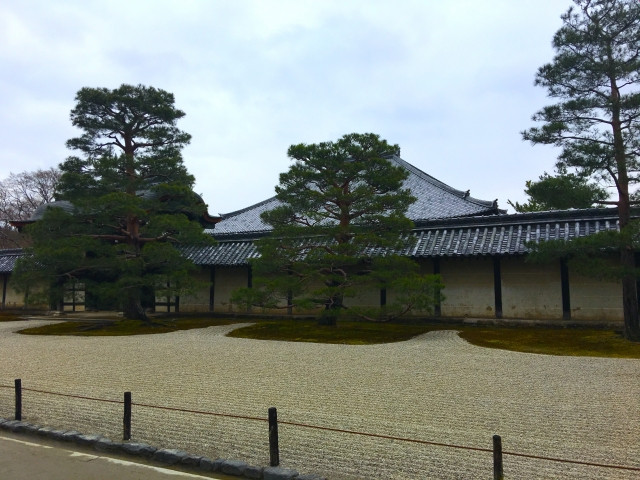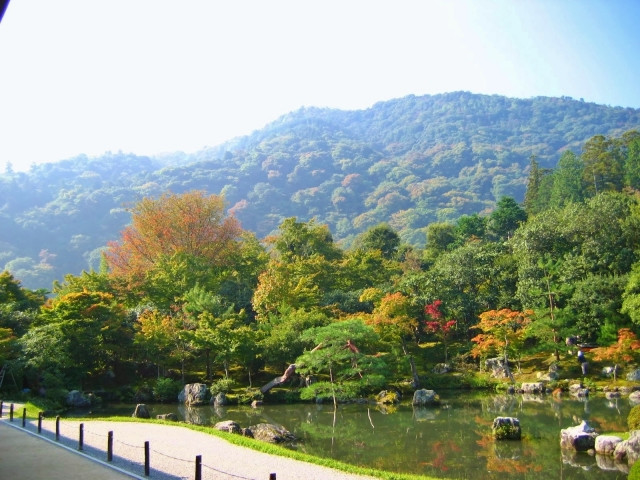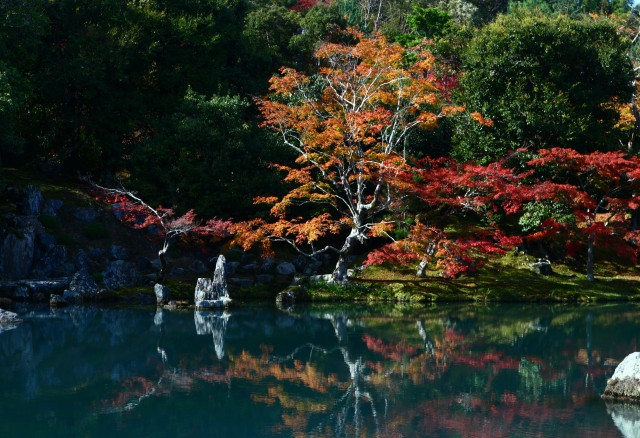Tenryu-Ji is a major historical religious site to visit in the Arashiyama district of Kyoto. The temple’s remarkable architecture, impressive ceiling paints, and its traditional garden that have survived the passage of time are a marvel to see. Whilst you’re there, explore the rest of Arashiyama like the bamboo grove.
Table of Contents
- Introducing Tenryu-Ji
- The Buildings of Tenryu-Ji
- Look Out for These at Tenryu-Ji
- Access, Opening Hours, Fees
- Takeaway
Introducing Tenryu-Ji

History
Tenryu-Ji 天龍寺 is a relic of the Muromachi Period and the Ashikaga Shogunate. It was established by Ashikaga Takauji, the most well known of the Ashikaga Shogunate. Tenryu-Ji was built in remembrance of Emperor Go-Daigo whom Ashikaga Takauji had served. In service to the Emperor, Ashikaga Takauji helped end the Kamakura period and placed Emperor Go-Daigo on the throne which started the Kenmu period. Due to Emperor Go-Daigo’s poor reign and the people’s discontent, Ashikaga overthrew his liege and became the first Shogun of Japan.
Since it was first built in 1339, Tenryu-Ji has suffered several tragedies. These included 8 fires, 3 of which majorly damaged the temple. The first fire occurred less than 20 years from its completion, whilst the last fire was in the 1860s. Majority of Tenryu-Ji’s structures are actually reconstructions with the exception of the gardens and the Zen hall.
※ Tenryuji Temple, "About Tenryuji Temple"
UNESCO World Heritage Site
Tenryu-Ji is 1 of 17 properties or structures that make up UNESCO’s “Historic Monuments of Ancient Kyoto”. It received its recognition in 1994. The title attests to the temple’s historical, religion, and architectural significance and importance.
※ UNESCO, “Historic Monuments of Ancient Kyoto”
Writer's Pick
The Buildings of Tenryu-Ji
Without further ado, let’s look at the most important structures in Tenryu-Ji:

Kuri 庫裏
The face of Tenryu-Ji, the Kuri is a monastery that houses the temple’s kitchen and several admin offices. Its white outer triangular walls are a rare architectural form. It also has a gable roof made from timber.
Hatto 法堂
Also known as the Dharma Hall. It is reserved for special ceremonies only. Historically however, it was where the Head Priest would preach the teachings of Buddha to the other monks. Inside the hall are several monuments including statues of Ashikaga Takauji, the founder of the temple (history above).
Note: Entry into the Hatto is limited to weekends, holidays, and special periods for a fee.
Tahoden 多宝殿
Tahoden directly translates to mean “Many Treasures Hall”. It is dedicated to Emperor Go-Daigo with a statue of his likeness on display. The area where this hall was built itself carries significance having been where the Emperor spent his childhood days.
Note: Entry is subject to a fee (mentioned below).
※ Tenryuji Temple, "What to See at Tenryu-ji"
Look Out for These at Tenryu-Ji
Keep your eyes sharp for these hidden gems in Tenryu-Ji:
Ceiling Painting
Make sure to get a good look at Hatto’s ceiling. A marvelous and grand painting of a dragon is depicted here. It was painted to commemorate Muso Soseki (who contributed greatly to the temple’s construction)’s 650th death anniversary. Kayama Matazo was the talented artist who prepared this work of art. What makes this ceiling painting so marvelous is that no matter where you are in the room, the dragon’s eyes are always following you. Similar to, and not any less amazing, than the Mona Lisa by Leonardo da Vinci. This effect is called the Nirami style in Japan.
※ Tenryuji Temple, "The Tenryu-ji Cloud Dragon"
Sogenchi Teien 曹源池庭園

There are two gardens in Tenryu-Ji, Sogenchi Teien and Hyakka-en 百花苑. Sogenchi Teien, or Sogen Pond Garden, was designed by Muso Soseki. Unlike the majority of Tenryu-Ji’s structures that have been reconstructed, this garden has survived destruction and retained its original look. Additionally, it is also THE FIRST place to receive Japan’s designation of Historical Site 史跡 and Special Place of Scenic Beauty 特別名勝.
※ 国指定文化財等データベース, “天龍寺庭園” ※ Tenryuji Temple, "What to See at Tenryu-ji"
Sogenchi Teien’s Central Pond
Sogenchi Teien is a stroll garden with a koi pond for its centerpiece.
For more about Japanese Gardens check our dedicated article:
The Captivating Gardens of Japan
By understanding the significance of this pond, you will better appreciate it when visiting. So have a read of the official website right here and read up on the Chinese legend where a koi transforms into a mythical dragon.
Daruma Painting
One of the highlight photo spots in Tenryu-Ji is partition painted with the image of Daruma. The painting can be found at the Kuri’s entrance hall.
Why is it popular?
Because this style of painting is hard to find.
What is Daruma?
It is based on Bodhidharma who introduced Zen Buddhism to Japan a long time ago. You may find the face on the painting resembles Daruma dolls.
Access, Opening Hours, Fees

Access to Tenryu-Ji
- 5-mins from Arashiyama Station
- 7-mins from JR Saga-Arashiyama Station
- Arashiyama Tenryu-Ji-mae Bus Stop
Opening Hours
Garden
8:30~17:00, last entry 16:50
Buildings
8:30~16:45, last entry 16:30
Dharma Hall
9:00~16:30
Weekends, holidays, and other special periods only
Entrance Fees (Adult)
Garden Only
500 yen
Garden + Buildings
800 yen
Note: There is no admission for buildings only.
Dharma Hall
500 yen
※ Tenryuji Temple, "Admission/Access"
Takeaway

Kyoto is home to countless temples and shrines and Tenryu-Ji is one of them. Not just a religious site, it holds an important place in Japan’s history alongside its position as Head Temple of Rinzai Zen Sect. Not to mention it is one of the key attractions in the Arashiyama area with Arashiyama Bamboo Forest, Kameyama Park, and Katsura River nearby.
For more ideas about what to do in Kyoto:
Mapping Kyoto: The Districts of the Eternal City
For a day trip to Arashimaya, check the 1st day of our 3 days Kyoto itinerary:








 (2).png)











.jpg)

.jpg)












